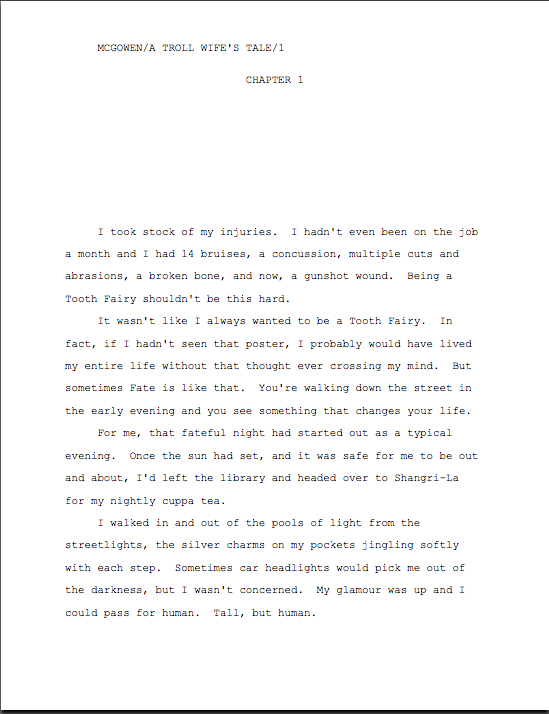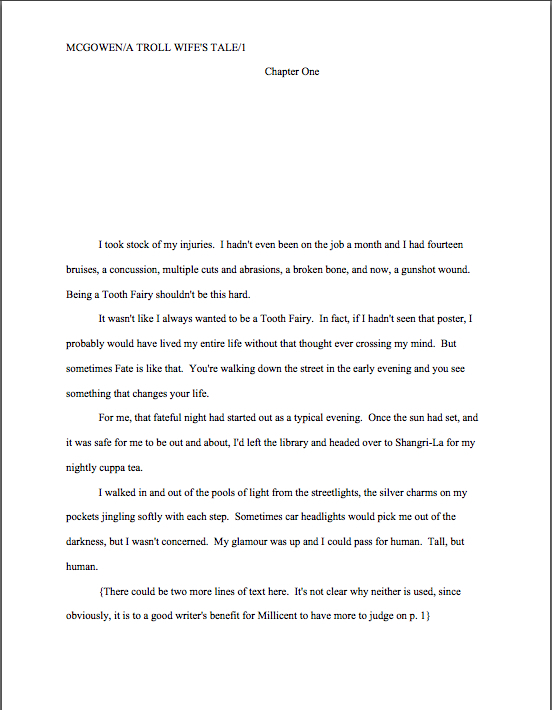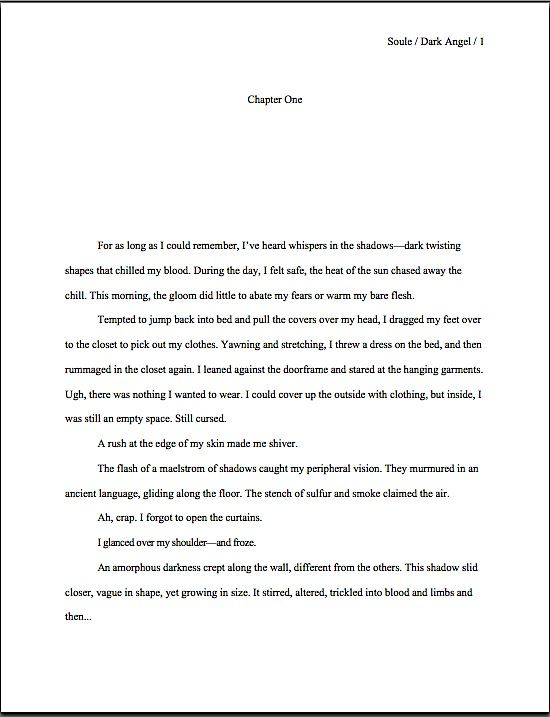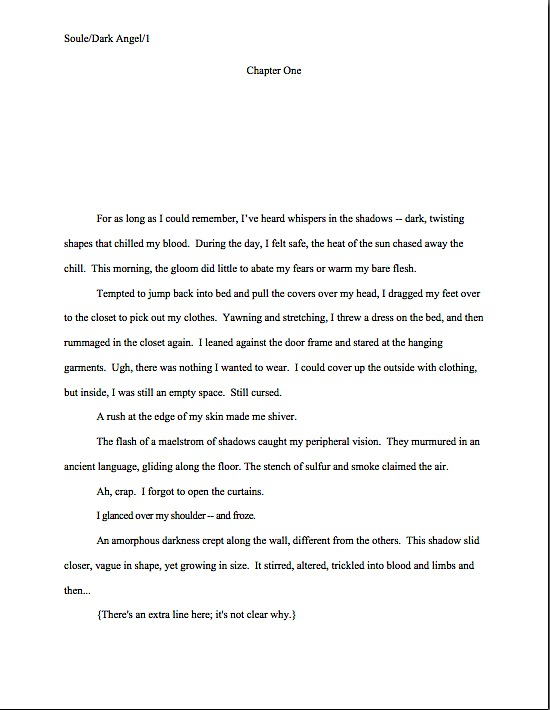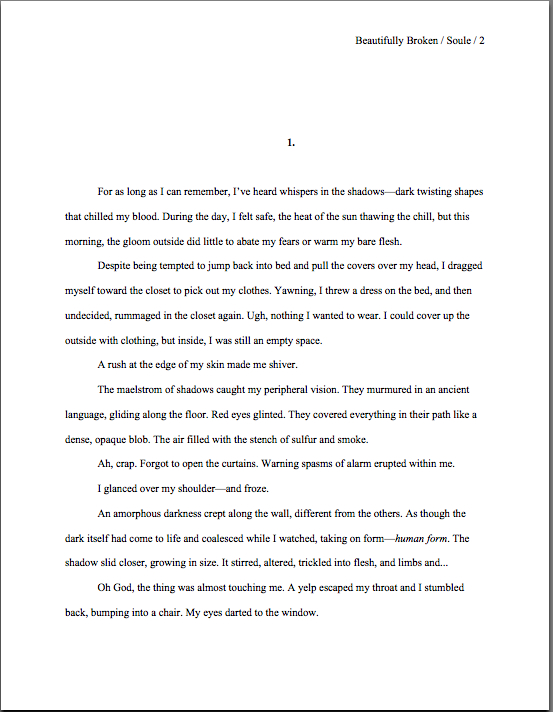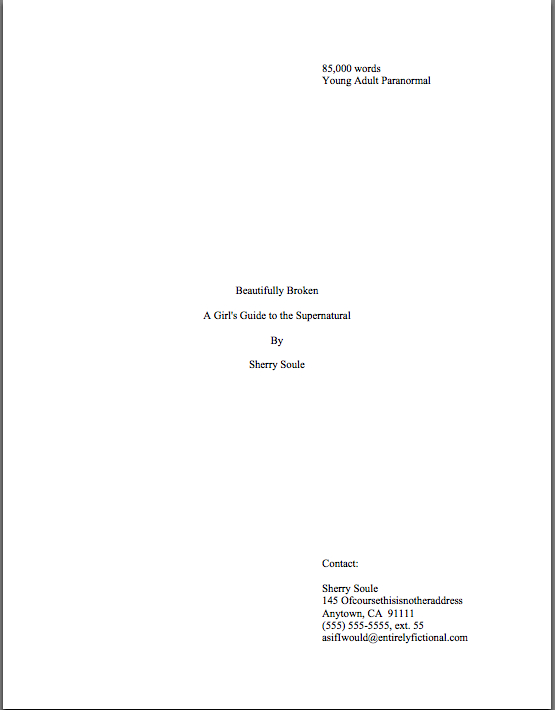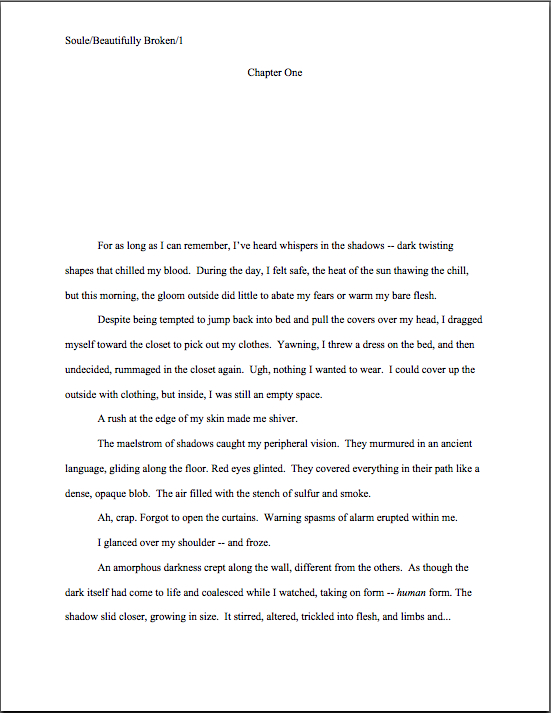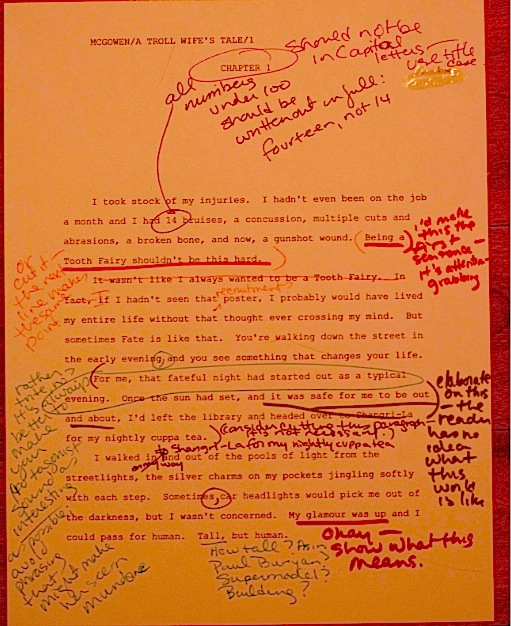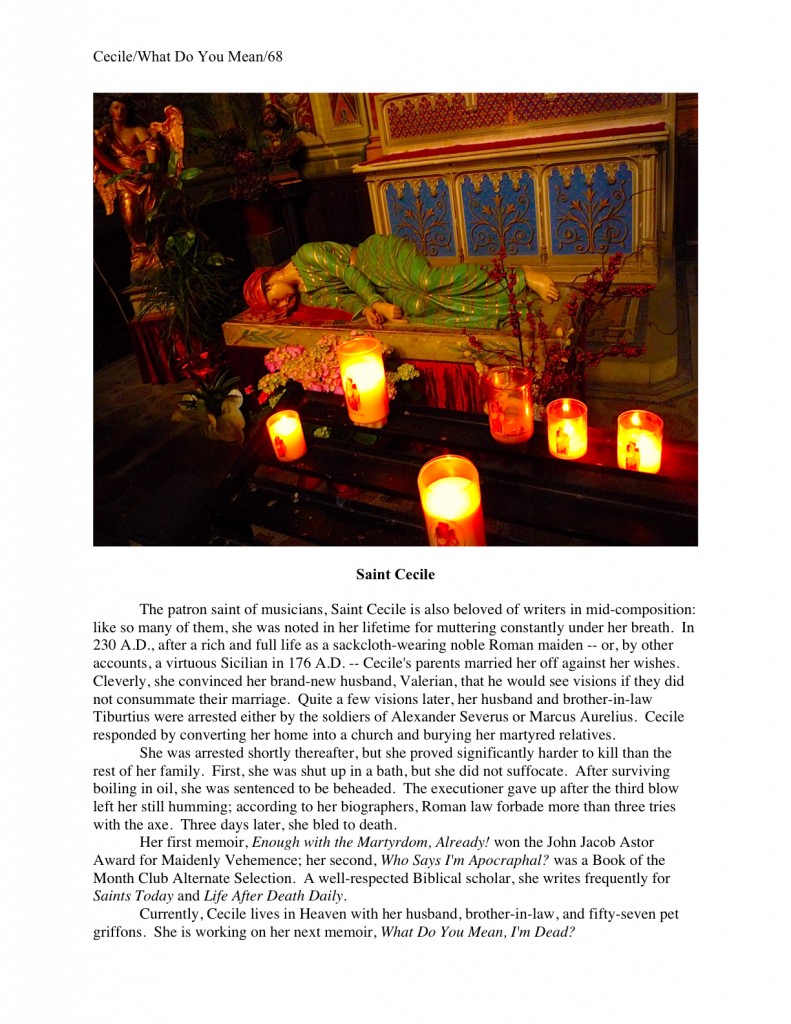
Okay, so maybe the masses aren’t rejoicing to quite this extent. But back in the heady days of Querypalooza, a number of you fine people asked for a similar fiesta devoted to preparing for that usually unexpected request, the author bio. And since many, many more of you did not raise violent objection when I suggested I might take a run at it this fall, it’s been on my agenda.
Actually, I’ve moved it up on my agenda — and not only because my annual quick perusal of a few hundred agency websites (oh, you thought I didn’t check how submission guidelines change between my yearly querying series?) revealed that a higher percentage of query packets are expected to contain something bio-like than in times past. I had intended to devote an intervening week or so to close textual analysis of more winners in the Author! Author! Great First Page Made Even Better Contest — I haven’t forgotten about you, third-placers! — now that we’ve had a few refreshing, synopsis-filled weeks to catch our breath and get excited about craft issues again. However, that’s the kind of post that requires an upbeat attitude to write well, and since I had yet another crash-related health setback this week, I probably won’t be my trademarked chipper self for another week or so.
Don’t ask. Just pile up more pillows on the bed and hope for the best.
But enough about me; let’s talk about you. Specifically, about how you’re going to portray yourself in your author bio.
And half of you just tensed up, worried that you might not have enough professional credentials to render you interesting to an agent or editor, didn’t you? I recognize the symptoms: the same proportion of my readership drew in its collective breath sharply when I first broached the issue of composing the credentials paragraph for your query letters.
Back then, the whimpering ran a little something like this: “But Anne, this is my first book! I don’t come from a magazine or newspaper background, so I don’t have previous publications to cite. Therefore, nothing I could possibly say about myself has any potential whatsoever for impressing Millicent the agency screener. Hadn’t I better just avoid saying anything autobiographical at all?”
The short answer is no. The long answer is NOOOOOOOOO. Why? Well, in the first place, it’s a myth that the only personal information worth noting in a query letter or author bio is previous publications. They help, obviously, but they certainly aren’t the only things a potential agent or editor might want to know about you.
It’s actually kind of surprising how pervasive that myth is, given the glaring logical fallacy it contains. Think about it: for it to be true, all agents would have to (a) prefer previously-published authors to the exclusion of all others, (b) not understand that even bestselling authors must at some point have to produce a first book, and/or (c) be unaware that writers occasionally draw upon life experience to construct their narratives. Obviously, selling memoir would be more or less impossible if (c) were true — and as any of you who have read an interview with an established author recently, disregarding life experience would render many novels harder to market as well.
But let’s zero in on the core of the concern: agencies that harbor the (a) prejudice will come right out and say prefers to represent previously published writers or obtains most clients through recommendations from others in their agency guide listings and websites; if neither states that up front, it’s safe to assume that while writing credentials might help your query get through the door, they’re not required for admission.
Why? Because even bestselling authors must at some point have to produce a first book, silly. (You might have seen that one coming, after (b), right?) While first books typically make up only about 4% of the literary market in any given year — yes, really — in the current tight market, it can actually be easier for an agent to sell an editor on a new writer with an exciting (read: easy-to-publicize) bio than on an author whose first two books did not sell well.
So it would be financially misguided for an agency that did not adhere to (a) to instruct its Millicents to rule out any query or bio that did not list past publications. Yes, even for fiction. Platform matters these days, of course — in the current tight book market, any selling point is bound to help — but contrary to popular believe among aspiring writers, platform need not consist solely of previous publications and/or celebrity in a non-writing field.
Even a cursory peek at the dust jackets of any randomly-selected group of new releases will demonstrate otherwise. Dust jacket bios virtually always contain non-publication information, for the exceedingly simple reason that it might interest a potential reader in the person who wrote the book.
Which is, incidentally, one of the reasons agency guidelines ask aspiring writers to include biographical info in their queries and/or a bio in their query or submission packets. Not only are they curious about what you’re like — they want to know if there’s anything in your background that would make a publishing house’s marketing department swoon with joy.
“Hey!” the marketers shout, linking arms to engage in raucous dancing. “This new writer is going to be a terrific interview on a subject other than his book! How often does that happen?”
Still not convinced that it might be in your best interests to make yourself sound like an interesting person, one who perhaps has at some point in the course of a lifetime done something other than sit hunched in front of a computer, typing feverishly? Okay, I’ll pull out the big gun, argumentatively speaking: (d) for non-publication credentials not to matter, agents whose submission guidelines or requested materials letters ask for biographical information couldn’t possibly mean their requests.
Which would be a trifle strange, considering how many query guidelines include tell us something about yourself or similar verbiage. And it would render all of those requests for query or submission packets to include an author bio downright bizarre.
That being the case, why would a savvy querier or submitter even consider not providing them with this information?
Does this sound vaguely familiar to those of you who followed Querypalooza and/or Synopsispalooza? It should: for the last — yow, has it been a month and a half already? — I’ve been concentrating upon query packets, submission packets, and the things that go in them. Throughout that worthy endeavor, I have mentioned early and often that the guiding principle of constructing a query packet, submission packet, or contest entry is give them precisely what they ask to see.
No more, no less. If an agency’s submission guidelines say to query with a synopsis, the first five pages, and an author bio, that’s precisely what the savvy querier’s envelope should contain, along with a SASE. By the same token, if an agent responds to a query with a request for the first 50 pages, the submission packet should contain a cover letter, the title page, 50 pages of text, and a SASE large and stamp-laden enough to get the whole shebang back to you.
That’s it. No home-baked cookies, even if you’re marketing a cookbook; no synopses for the other five manuscripts lying dormant in your desk drawer, and certainly no page 51. Remember, part of what you’re demonstrating in a query or submission packet is that you are that surprisingly rare aspiring writer capable of and willing to follow directions to the letter.
Thus, as a clever between-the-lines reader might have already figured out, if an agency’s guidelines specify that they want to see a bio paragraph in your query or an author bio in your query or submission packet, it would behoove you to put ‘em there. Ditto if a request for pages asks for a bio.
All that being said, my next piece of advice may come as a bit of a surprise: I always advise aspiring writers to include an author bio with requested pages in a submission packet. I’m not talking about that 5-page writing sample some agents ask to see, naturally, but even if an agent asks to see even as little as 50 pages or a chapter, consider tucking your bio at the bottom of the stack.
Oh, if you could see your faces; did Frankenstein’s monster just walk into the room? “But Anne,” you shriek in horror, ducking swiftly behind the nearest large piece of furniture, “that might look as though I (pause here for hyperventilation) were disregarding the submission guidelines! Why in heaven’s name would I take a risk like that?”
Good question, panicky ones. Try breathing into a paper bag while I answer it.
Quite simply, it’s such a common professional practice that it’s unlikely to raise any eyebrows. When an agent circulates a novel to editors, it’s generally with an author bio as the bottom page in the stack; it’s also the last page of a book proposal. So including it in a full manuscript submission tends to come across as professional, rather than an amateur’s attempt to slip additional information in under the wire.
Just between us, though: if some additional information might slip under the wire this way, is that such a bad thing?
Before those of you who currently have requested materials floating around agencies or small publishing houses begin to freak out, I hasten to add: including an author bio in a submission packet is most emphatically not required. Unless, of course, the agent or editor in question has asked to see one.
Increasingly, though, they are asking — even at the querying stage, which would have been unheard-of just a few years ago. Now, agents routinely request author bios with submissions, especially for nonfiction, agents will often want to know up front who this writer is, what s/he does for a living, and what else s/he’s writing.
That set some of you hyperventilating again, didn’t it? Relax — you can do this.
Soothingly, author bios are one of the few marketing materials in the writer’s promotional kit that tends not change much throughout the agent-finding-through-publication process. Nor, even more comforting, have the basics of writing one changed much in the last 30 years.
Refreshing, eh? Don’t go sinking into that lavender-scented bath too quickly, though, because twos things about the author bio have changed in recent years. First, the author is now expected to write it, rather than the publisher’s marketing department. (Although they may well tweak it.) Second, the author needs to provide it increasingly early in the publication process.
How early, you ask? Well, I don’t want to disturb your plans for the weekend, but do you have time to start work on yours right now?
Come out from behind that large piece of furniture; the monster can see you perfectly well back there. Procrastinating about this particular professional obligation won’t make it go away.
Besides, you knew this day was coming — or that it would once you successfully sold a book, right? Although agents and editors are asking for author bios earlier in the process than in days of yore, it can hardly come as a surprise that you’d have to come up with one eventually. Any of you who has ever read a hardcover book with a dust jacket must have at least suspected that your bio was somehow relevant to the process, right?
I sense some glancing at the clock out there, don’t I? “But Anne,” those of you on your way out the door to mail requested materials whimper, “I’m aware that I’m going to need to construct one sometime, but need it be this very second? Wouldn’t it make more sense to wait until, say, somebody in authority actually asks to see it?”
Well, to be quite honest with you, you could get away with doing just that. It wouldn’t be the wisest course, however.
Why? Well, writing an eye-catching author bio isn’t easy; just as it’s much less stress-inducing for an aspiring writer to cobble together a synopsis almost anytime other than immediately after an agent or editor has asked her to produce one, tossing together an author bio when you’re frantically trying to proofread your novel at 3 AM and figure out how much postage to slap on your SASE for its safe return is quite a bit more challenging than, say, devoting a free afternoon to the task three months before you’re planning to query at all.
I just mention. The results also tend to be — if not better, than at least of a quality that would not make the writer cringe should a shortened version ever turn up on a dust jacket to linger there until the end of recorded time. (Or longer, perhaps: most of the end-of-the-world scenarios I’ve seen have paper and cockroaches as the happiest survivors of nuclear activity.)
Seventeen dozen hands just shot up in the air, despite the potential for attracting roving monsters’ attention. “Shortened version?” the confused shout in unison. “Wait, isn’t the author bio identical to that 50-word paragraph I’ve been seeing for years inside the back flap of book covers, a belief apparently corroborated by your crack above about how we all should have expected to have to write one eventually?”
Touché on that last point, and it’s a good question in general: many, if not most, aspiring writers simply assume that what they see in print is precisely what the publishing industry expects to receive. But just as a professionally-formatted manuscript does not resemble a published book in many respects — and if that’s news to you, hang on: there’s a Formatpalooza in our collective future — the kind of author bio appropriate to the query or submission stage differs fairly significantly from the kind found on dust jackets.
For one thing, it’s longer. The standard in the neighborhood of 250 words — or, to put it in visual terms, one double-spaced page or just over half a single-spaced page with an author photo at the top. (And yes, Virginia, I shall be inundating you with concrete examples of both later in this series. How can you even doubt?)
“Um, Anne?” the time-pressed pipe up again. “That sounds as though you’re about to ask me to rattle off my selling points as an author, and, as we discussed back in Querypalooza, I don’t feel that my credentials are all that impressive. Besides, it’s awfully difficult many of us to carve out time in our schedules to write, much less to market our work to agents. I’m in the middle of my tenth revision of Chapter 3, and I’m trying to get a dozen queries in the mail before Thanksgiving. I also have a life. May I be excused, please, from dropping all that in order to sit down and compose something I only might need if one of those agents asks to see the book — and asks to see a bio?”
Well, first off, clock-watchers, congratulations for having the foresight to send off a flotilla of queries well before the onset of the holiday season. As long-term readers of this blog are already aware (I hope, given how frequently I mention it), the publishing industry slows W-A-Y down between Thanksgiving and the end of the year. Best to get your query letters in before the proverbial Christmas rush, I always say. Because, really, if you don’t, you’re probably going to want to hold off on sending the next batch until after the Martin Luther King, Jr., holiday.
Yes, in response to all of those shouted mental questions from those of you who do not happen to be U.S. citizens: I do mean after January 27th, 2011.
Why wait so long, you howl in frustration? Several reasons. First, as we discussed before, during, and after the traditional mid-August-through-Labor-Day publishing vacation period, Millicent’s desk is going to be piled pretty high with envelopes when she returns after her winter holidays. Place yourself in her snow boots for a moment: if you were the one going through all of that backlog of unopened queries, would you be more eager to reject any given one, or less?
I’m going to leave the answer to that between you and your conscience.
Second, in the US, agencies are required by law to produce tax documents for their clients by the end of January, documenting the royalties of the previous year. Yes, everyone knows it’s coming, but common sense will tell you that the vast majority of the inmates of agencies were English majors.
Have you ever watched an English major try to pull together his tax information?
Third — and to my mind, the best reason by far — do you really want your query (or submission) to get lost amongst similar documents from every unpublished writer in North America who made the not-uncommon New Year’s resolution, “By gum, I’m going to send out 20 queries a month, beginning January 1!”
Fortunately for Millicent’s sanity, the average New Year’s resolution lasts a grand total of three weeks, so her February is not nearly so hectic as her January. But for those resolution-fueled few weeks, she’s not likely to be an exceptionally good mood, if you catch my drift.
All that being said (and I had a surprising amount to say on the subject, didn’t I, considering that the foregoing could have been summarized quite adequately as, “Start getting those queries out now!”), I would encourage all of you who are at the querying stage of your careers to set aside anywhere from a few hours to a couple of days to sit down and hammer out a great author bio for yourself. Ideally, sometime really, really soon, even if you are not planning to query an agency that asks for a bio up front.
Again, how does now sound?
Why I am I pressing you on this? For some very, very practical reasons: often, the request for a bio comes when your mind is focused upon other things, like doing a lightning-fast revision on your book proposal so you can send it to that nice editor who listened so attentively to your pitch at a conference or just before you start dancing around your living room in your underwear because your before-bed e-mail check revealed a response to a query.
Agents and editors tend to toss it out casually, as if it’s an afterthought: “Oh, and send me a bio.” The informality of the request can be a bit misleading, however: the one-page author bio is actually a very important tool in your marketing kit.
Yes, yes, I know: over the years — and frequently throughout the course of Query- and Synopsispalooza — I have told you that many, many things were important tools in your marketing kit. Your synopsis, for instance. Your query letter. Your pitch. Your first 50 pages. Your first page.
And you know something? I wasn’t lying to you any of those times. They’re all important.
So just how important is the author bio, you ask, cynicism hardening your comely eyes? Well, it’s not unheard-of for editors, in particular, to decide to pass on the book they’re being offered, but ask the agent to see other work by the author, if the bio is intriguing enough.
Yes, really: it’s happened more than once. Heck, it’s happened to me more than once.
Admittedly, my background is pretty unusual (and detailed, conveniently enough, in my bio, if you’re interested). My cult of personality aside, a general axiom may be derived from the fact that attracting interest in this manner has happened to any writer, ever: it is not a tremendously good idea just to throw a few autobiographical paragraphs together in the last few minutes before a requested manuscript, proposal, or synopsis heads out the door.
Which is precisely what most aspiring writers facing a bio request do. In the extra minute and a half they have left between devoting 20 minutes to dashing off a synopsis and when the post office door locks for the night.
Big, big mistake: if the bio reads as dull, disorganized, or unprofessional, agents and editors may leap to the unwarranted conclusion that the manuscript — or, heaven help us, the writer — also dull, disorganized, and/or unprofessional. After all, they are likely to reason, the author’s life is the material that she should know best; if she can’t write about that lucidly, how can she write well about anything else?
That made you dive behind the sofa again, didn’t it? Sad but true, Millicent and her ilk have to draw conclusions based solely upon the evidence on paper in front of them. If only a writer had any control over how they might perceive her personally…
Oh, wait, she does: she can write her bio so she comes across as fascinating.
A good bio is especially important if you write any flavor of nonfiction, because the bio is where you establish your platform in its most tightly-summarized form. That’s important, because — chant it with me now, long-time readers – “What’s your platform?” is practically the first thing any agent or editor will ask a NF writer.
Think about it: your platform consists of the background that renders you — yes, YOU — the best person on earth to write the book you are pitching. This background can include, but is not limited to, educational credentials, relevant work experience, awards, and significant research time.
You know, the stuff we discussed at length when you were thinking about the credentials paragraph of your query letter. For a NF writer, the author bio is a compressed résumé, with a twist: unlike the cold, linear presentation of the résumé format, the author bio must also demonstrate that the author can put together an array of facts in a readable, compelling fashion.
“Hey, Anne,” some of you ask suspiciously, clutching your paper bags and keeping an eye out for any monsters who might be about to jump out at you, “why was that last bit in boldface? I’m a novelist, so I was preparing to zone out on that bit about platform, but the amount of ink in the type makes me wonder if I should be internalizing a lesson here.”
Well reasoned, paranoid novelists: just as the author bio is an alternate venue for the NF writer to demonstrate his platform, the bio provides Millicent similar information about a novelist.
Aren’t those of you fiction writers tempted to cling to the old-fashioned notion that you’re exempt from this daunting challenge glad that you already had your hyperventilation bags in hand? “A bio?” novelists say nervously when agents and editors toss out the seemingly casual request. “You mean that thing on the back cover? Won’t my publisher’s marketing department write that for me?”
In a word, no. They might punch it up a little down the line, but in the manuscript-marketing stages, you’re on your own.
If this comes as a nasty surprise to you, you’re not alone. The tendency to assume that someone else will take care of the bio is practically universal amongst writers — until they have been through the book publication process. Unfortunately, despite the ubiquity of this misconception, hemming and/or hawing about the production of one’s bio is most assuredly not the way to win friends and influence people in an agency.
Or a publishing house, for that matter. You think the marketing department isn’t eager to get to work reorganizing your bio?
So if you take nothing else from today’s post, absorb this enduring truth and clutch it to your respective bosoms forevermore: if you want to gain practice in being an agent’s dream client, train yourself not to equivocate whenever you are asked to provide extra material whilst marketing your work. Instead, learn to chirp happily, like the can-do sort of person you are: “A bio? You bet!”
Yes, even if the agent or editor in question has just asked you to produce some marketing data that strikes you as irrelevant or downright stupid. Even if what you’re being asked for will require you to take a week off work to deliver. Even in you have to dash to the nearest dictionary the second your meeting with an agent or editor is over to find out what you’ve just promised to send within a week is.
Or, perhaps more sensibly, post a comment here to inquire. That’s what Author! Author! is here for, you know: to help writers get their work successfully out the door.
Why is appearing eager to comply and competent in your bio so important, I hear you ask? Because professionalism is one of the few selling points a writer can’t list in an author bio. A bio is not a self-praise session, after all: it’s a collection of facts, organized to make it clear to Millicent that you are either extremely credible, personally fascinating, the best person in the known universe to write this particular book, or, ideally, all of the above.
And no, you may not simply tell her any of those things directly. Self-aggrandizing statements look pretty silly on the page, after all. See for yourself:
Bart Smedley is a consummate professional writer. He’s up every day at 4:30 AM, hard at his writing. Instead of taking the lunch hour most ordinary mortals do, he hies himself to the local library to read past issues of Publishers Weekly, in order to understand his future agent’s lot better. An undeniably wonderful human being, Bart is a delight to know, funny, insightful, and personable. Also, he is physically attractive: he is indeed a thing of beauty and a joy forever.
Admit it: you’d laugh if you were Millicent. To most people in positions to bring your work to publication, self-praise regarded as a sure indicator of how much extra time they will have to spend holding a new author’s hand on the way to publication, explaining how the industry works.
How much extra time will they want to spend on you and your book, I hear you ask, over and above the time required to sell it? It varies from agent to agent, of course, but I believe I can give you a general ballpark estimate without going too far out on a limb: none.
Again, I know — all the agency guides will tell the previously unpublished writer to seek out agencies with track records of taking on inexperienced writers. It’s good advice, but not because such agencies are habitually eager to expend their resources teaching newbies the ropes.
It’s good advice because such agencies have demonstrated that they are braver than many others. They are willing to take a chance on a new writer from time to time, provided that writer’s professionalism positively oozes off the page and from her manner.
I’ll bet you a nickel, though, that the writers these agencies have signed did not respond evasively when asked for their bios.
Professionalism, as I believe I have pointed out several hundred times before in this forum, is demonstrated in many ways. Via manuscripts that conform to standard format, for instance, or knowing not to call an agency unless there’s some question of requested materials actually having been lost. It is also, unfortunately for those new to the game, demonstrated through familiarity with the basic terms and expectations of the industry.
This is what is known colloquially as a Catch-22: you get into the biz by showing that you know how people in the biz act — which you learn by being in the biz.
So “Bio? What’s that?” is not the most advisable response to an agent or editor’s request for one. Nor is hesitating, or saying that you’ll need some time to write one. (You’re perfectly free to take time to write one, of course; just don’t say so up front.)
Why is even hesitation problematic, I hear you ask? (My readers are so smart; I can always rely on them to ask the perfect questions at the perfect times. Also to have a paper bag and monster-repellant spray handy.)
Well, let me put it this way: have you ever walked into a deli on the isle of Manhattan unsure of what kind of sandwich you want? When you took the requisite few seconds to collect your thoughts on the crucial subjects of onions and mayo, did the guy behind the counter wait politely for you to state your well-considered preferences? Or did he roll his eyes and move on to the next customer after perhaps 7 seconds?
And did that next customer ruminate at length on the competing joys of ham on rye and pastrami on pumpernickel, soliciting the opinions of other customers with the open-mindedness of Socrates conducting a symposium. Or did he just shout over your shoulder, “Reuben with a dill pickle!” with the ultra-imperative diction of an emergency room surgeon calling for a scalpel to perform a tracheotomy with seconds to spare before the patient sustains permanent brain damage from lack of oxygen?
If you frequent the same delis I do when I’m in town, the answers in both cases are emphatically the latter. Perhaps with some profanity thrown in for local color.
NYC-based agents and editors eat in those delis, my friends. They go there to relax.
This regional tendency to mistake thoughtful consideration — or momentary hesitation — for malingering or even slow-wittedness often comes as an unpleasant shock to those of us who are West Coast bred and born, I must admit. Here in the Pacific Northwest, we like to encourage meditation in daily life; there are retail emporia in the greater Seattle metropolitan area where the Buddha himself could happily hold a full-time job with no significant loss of contemplative time.
Even in retail. “I’m here if you need anything,” the Buddha would say, melting into the background to think. “Just let me know if you have questions about those socks. There’s no rush. Go ahead and become one with those shoes.”
This is why, in case you have been wondering, NYC-based agents and editors sometimes treat those of us who live out here like flakes. In certain minds, we’re all wandering around stoned in bellbottoms, offering flowers to strangers at airports, reusing and recycling paper, and spreading pinko propaganda like, “Have a nice day.”
That is, when we’re not writing our books in moss-covered lean-tos, surrounded by yeti in Birkenstocks. Oh, you laugh, but I’m not entirely sure that my agent understands that I’m not composing my current novel in a yurt by light provided by a squirrel-run generator. Or so I surmise from his tone.
My point is, it would behoove you to have an author bio already written by the time you are asked for it, so you will not hesitate for even one Buddha-like, yeti-consulting moment when the crucial request comes. Not entirely coincidentally, I shall be spending the next week of posts on helping that happen.
And make mine tempeh, avocado, and sprouts on sourdough, please, with a side of smoked salmon for my yeti friend here. Oh, and six AA batteries on rye for the monster lurking in the background. In a paper bag, if you please, so we’ll be prepared for any contingency.
We’ve got to build up our energy for some hardcore bio-writing, after all. Keep up the good work!
P.S.: while I’m in nagging mode, when’s the last time you backed up your writing files? If you can’t remember, wouldn’t now be an excellent time to rectify that?
Bruce Alford, a personal trainer, aerobics instructor and a former journalist, has published creative nonfiction and poetry in various literary journals. Alford’s “How to Write a Real Poem” was selected for Special Merit in the 2010 Muriel Craft Bailey Poetry Competition. His book of poems, Terminal Switching (Elk River Review Press), was published in 2007.












 Please, I implore you, do not put off writing at least a viable first draft of your bio until the day after an agent or editor has actually asked you to provide one. Set aside some time to do it soon.
Please, I implore you, do not put off writing at least a viable first draft of your bio until the day after an agent or editor has actually asked you to provide one. Set aside some time to do it soon.





















